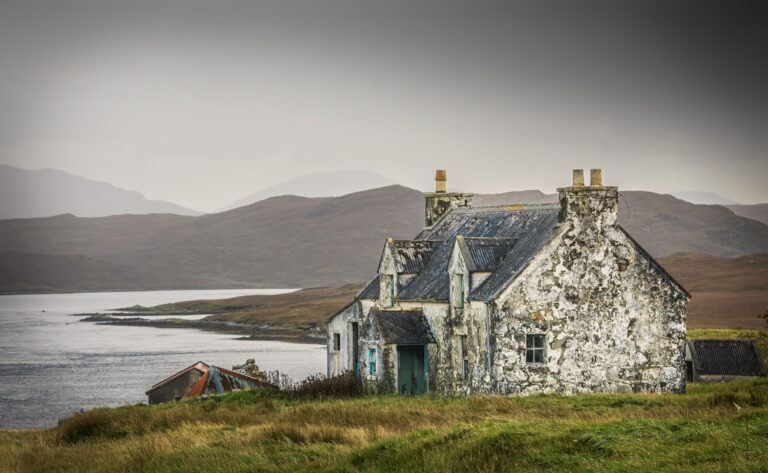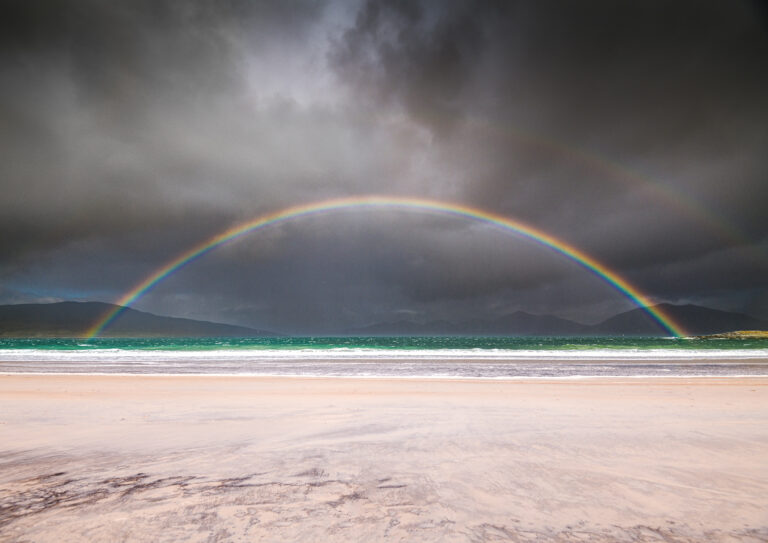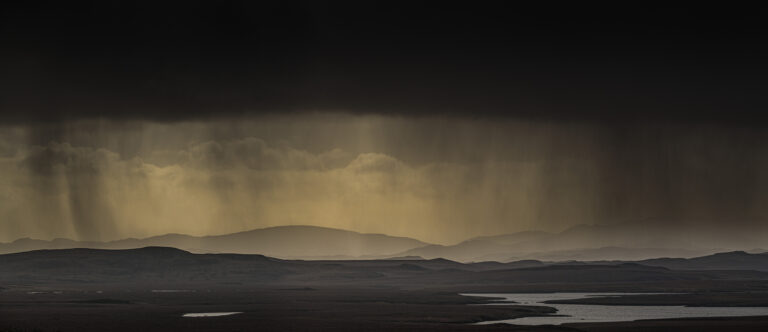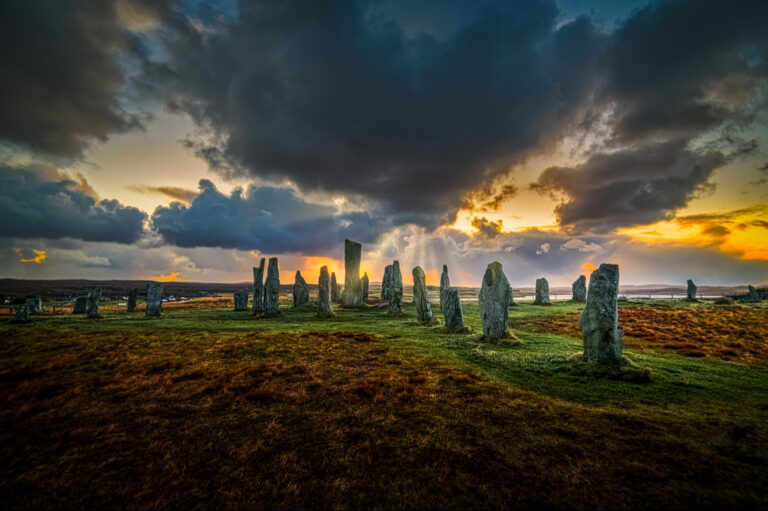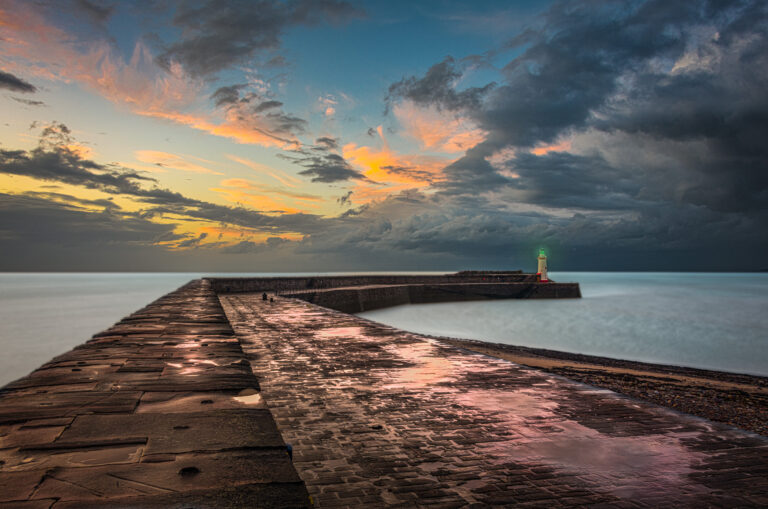As I drove along the road north to Shawbost, on the Isle of Lewis, my attention was fleetingly drawn to a brown ‘Tourist’ signpost that hinted at a captivating subject for a photograph – “Norse Mill & Kiln” it stated, pointing to the left. Despite being unable to stop and explore at that moment, I mentally marked the location for future investigation, planning to delve into it online once back at the Air BnB. The area was relatively isolated and my primary goal for this location’s visit was to capture an “Astro” shot; a pursuit well suited to the Hebrides due to the minimal light pollution.
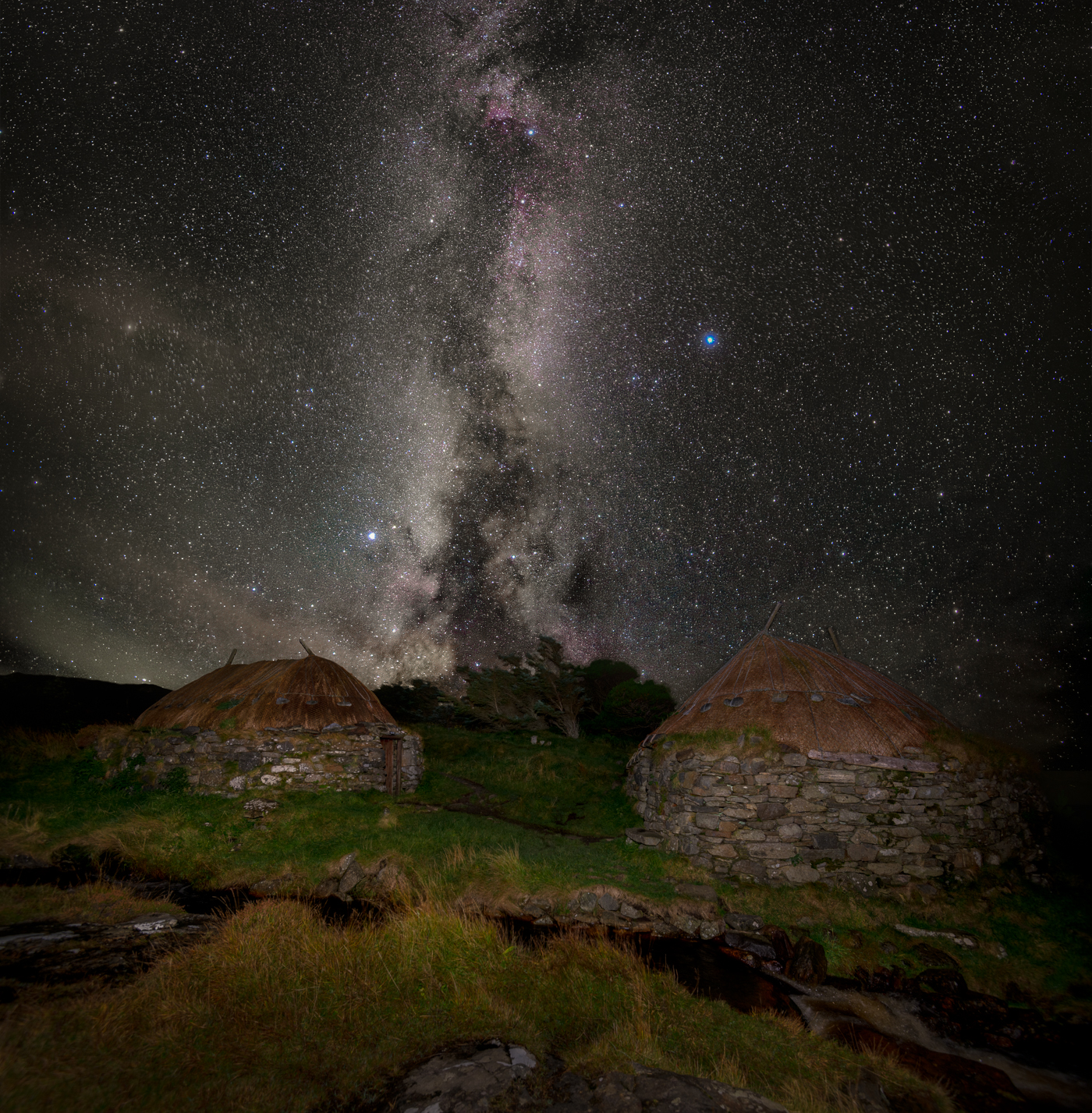
Typically, this time of year finds me on the Western Isles or the West Coast of Scotland, where I consistently encounter diverse weather patterns—storms followed by brilliant sunshine, ominous dark clouds with swirling hail. While this might not be everyone’s idea of favourable weather, it undeniably provides excellent opportunities for captivating photographs. It seems I share a common trait with fellow landscape photography enthusiasts—an almost obsessive preoccupation with the weather. Attempting to decipher or establish an average from the conflicting information provided by three different weather apps has become a familiar ritual. Keeping a vigilant eye on the forecast, I observed a brief respite from the wind, rain, and hail, specifically during the hours after nightfall for the following night. Recognizing this as my window of opportunity, I returned from a pre-planned session of beach shots, prepared a meal, and, after a quick sky check made from the back door of the crofter’s cottage, made the impromptu decision to embark on a journey back down to The Norse Mill and Kiln.
After a 20-minute drive, I found myself at a small, dark car park alongside the A858. Stepping out of the car into the clear, cool night. In the enveloping darkness, the sole audible sounds were the rhythmic whir of a nearby wind turbine and the gentle lapping of waves against the shores of Loch Raoinebhat. The night was profoundly dark, and although my eyes struggled to adjust, I reached into my camera bag for my trusty head torch. Illuminating the scene, I gathered my equipment—an imposing ‘large’ tripod, a robust carbon fibre structure that, despite its claim to be lightweight, felt like a substantial burden. Alongside it, I carried my camera bag containing an array of lenses, a radio shutter trigger and two flash guns. A smaller shoulder bag held my Benro geared head, the MSM Star Tracker and a small tracker-mounted green laser for accurately aligning the MSM tracker with Polaris (North Star).
With the camera bag slung over my back, the smaller bag tossed across my shoulder, and the tripod gripped firmly by one of its legs, I embarked on my journey. The first challenge arose at the kissing gate that marked the entrance from the car park to the main access path. Clearly designed without consideration for individuals hauling gear, the gate posed a formidable obstacle. To navigate through, I had to temporarily shed my backpack and shoulder bag, dropping them unceremoniously onto the path side of the fence. A mere 20 meters into my venture the struggle for access had already begun.
Once through the kissing gate and reunited with my gear, I traversed the undulating gravel path, its twists and turns illuminated by the steady bobbing of my bright LED head torch. After covering about half a mile, I reached the Norse Mill & Kiln buildings and began to survey the surroundings. It became apparent that the Milky Way would grace the southern skies, prompting the need to cross a swiftly flowing stream for an optimal composition capturing both buildings and the celestial spectacle. Navigating through tufted grass, I blindly followed the stream’s course upwards and away from the structures, hoping to find a suitable crossing point. To my good fortune, I stumbled upon an impromptu bridge—a makeshift structure consisting of an old iron gate laid across the stream channel. Crossing this improvised bridge proved to be a breeze and safely on the other side with all my gear intact, I retraced my steps to the envisioned location. It met my expectations—a relatively flat surface with a sturdy rocky foundation, adorned with scattered boulders perfect for perching my camera bag. The stage was set!
Standing there, bathed in the thin beam of my head torch that illuminated the foreground, I marvelled at the vast celestial canvas above. The Milky Way sprawled out, a breathtaking tapestry of stars and galaxies against the dark expanse. The stream gushed nearby, its steady flow providing a natural soundtrack to this exquisite nocturnal scene. Determining to capture the Milky Way first, I considered the impending clouds and opted to seize the opportunity while the sky remained crystal clear. The weather’s unpredictability wouldn’t affect the foreground photography, so I set out to immortalize the cosmic display laid out before me.
Wrestling the sizable tripod into position, I retrieved the geared head from its bag and securely affixed it atop the tripod. The MSM tracker followed suit, clamped into place on the geared head. With a careful hand, I extracted the green laser and attached it to the side of the tracker. Aligning everything in the darkness proved challenging, but I managed a rough alignment by eye. Turning on the laser, a brilliant green rod of light shot skyward, reaching toward Polaris. The light danced as it encountered suspended dust particles in the atmosphere. After about 20 seconds of meticulous adjustments on the geared head, I had successfully aimed the laser directly at Polaris—alignment accomplished! With everything set, I flicked the switch to activate the tracker and turn off the laser.
The MSM tracker quietly ticked away, its ball head moving in sync with the celestial rotation. With precision, I clamped the camera onto the tracker, affixing a 16-35mm lens. I attached my wireless shutter release and dialled-in settings suitable for the profound darkness. Thanks to the tracker, I could comfortably expose for a minute at low ISO levels, effectively minimizing noise. Approximately 30 shots, each lasting one minute, captured the mesmerizing expanse of the night sky. Turning off the tracker, I removed and repositioned the camera on the geared head. Fortuitously, as the final shots of the Milky Way unfolded, subtle wisps of clouds began creeping in from the west, perfectly timed!
Experimentation became the focus of the foreground. In lieu of a powerful torch, I opted for two radio-controlled flashguns, triggered manually. A 30-second exposure of the foreground, followed by a flash burst, allowed for varying degrees of illumination. Opting for a larger viewing experience, I connected my CamRanger 2 to an 11” tablet, providing a more detailed review of the images. Sorting through the varied levels of illuminated foreground would be a task for post-processing back home.
Well past midnight, and feeling satisfied with the collection of photographs, I dismantled the setup, stowing everything neatly in their respective bags. Two thorough checks ensured no gear was left behind. Plodding back along the stream, I retraced my steps over the makeshift iron gate-cum-bridge, stumbling uphill in the encompassing darkness until I reached the gravel access path. After about 10 minutes, the familiar kissing gate signalled the car park’s boundary. Bags off, through the gate again, bags on, and I walked up to the awaiting car. A reassuring click echoed as I pressed ‘unlock’ on the key fob, and the car park was flooded with bright illumination. I proceeded to load the car with thoughts of how I would process the images upon returning home. With the engine purring, I drove back to the cottage, the night’s adventure etched in my mind and the incessant whirring noise of the wind turbine fading away with every mile I covered.

